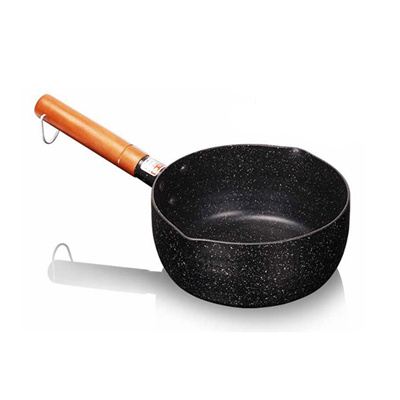The art of cooking goes hand in hand with the science of culinary chemistry. The sauce pan, a seemingly simple kitchen tool, is a laboratory where chemical reactions unfold to create the flavors and textures we crave. In this article, we’ll uncover the science behind the sauce pan and its role in the culinary transformations that bring our dishes to life.
Heat Conduction: The Foundation: The sauce pan’s ability to conduct heat is at the heart of its culinary chemistry. As heat is applied to the base, it transfers to the food, initiating a cascade of reactions that affect flavor, texture, and color.
Caramelization and the Maillard Reaction: When sautéing or searing ingredients in a sauce pan, the Maillard reaction and caramelization occur. These reactions involve sugars and amino acids interacting under heat, resulting in the development of rich, complex flavors and the characteristic browning we associate with well-cooked dishes.
Thickening Agents and Emulsification: Sauce pans are central to creating sauces with diverse textures. Adding thickening agents like flour or cornstarch to a sauce pan triggers a chemical reaction that thickens the liquid as it heats. Emulsification, achieved by blending immiscible liquids using a sauce pan’s gentle heat, involves the chemistry of molecular bonding.
Temperature Control for Precision: The sauce pan’s controlled heat allows for precise temperature management. From deglazing to tempering eggs for custards, maintaining specific temperatures is essential for achieving desired outcomes without unintended chemical changes.
Reduction: Concentrated Chemistry: Simmering liquids in a sauce pan reduces them through evaporation. As the liquid volume decreases, flavors concentrate, and chemical reactions intensify. This chemistry of reduction results in sauces that boast depth and complexity.
Flavor Extraction and Infusion: Sauce pans act as flavor extractors during simmering. Aromatics, herbs, and spices release their volatile compounds into the liquid, creating an infusion of tastes and aromas. This chemical exchange is at the heart of creating broths, stocks, and flavor bases.
Acidity and pH Balance: Acids, whether from citrus juices, vinegars, or wine, play a pivotal role in the chemistry of the sauce pan. They balance flavors, alter the texture of proteins, and even influence the pH of a dish, affecting the chemistry of taste perception.
In conclusion, the sauce pan is a laboratory of culinary chemistry, where heat triggers reactions that transform raw ingredients into delectable dishes. Understanding these chemical processes empowers chefs to control outcomes and create flavors that dance on the palate. Embrace the science behind the sauce pan, and you’ll uncover the secrets to crafting extraordinary culinary experiences.







